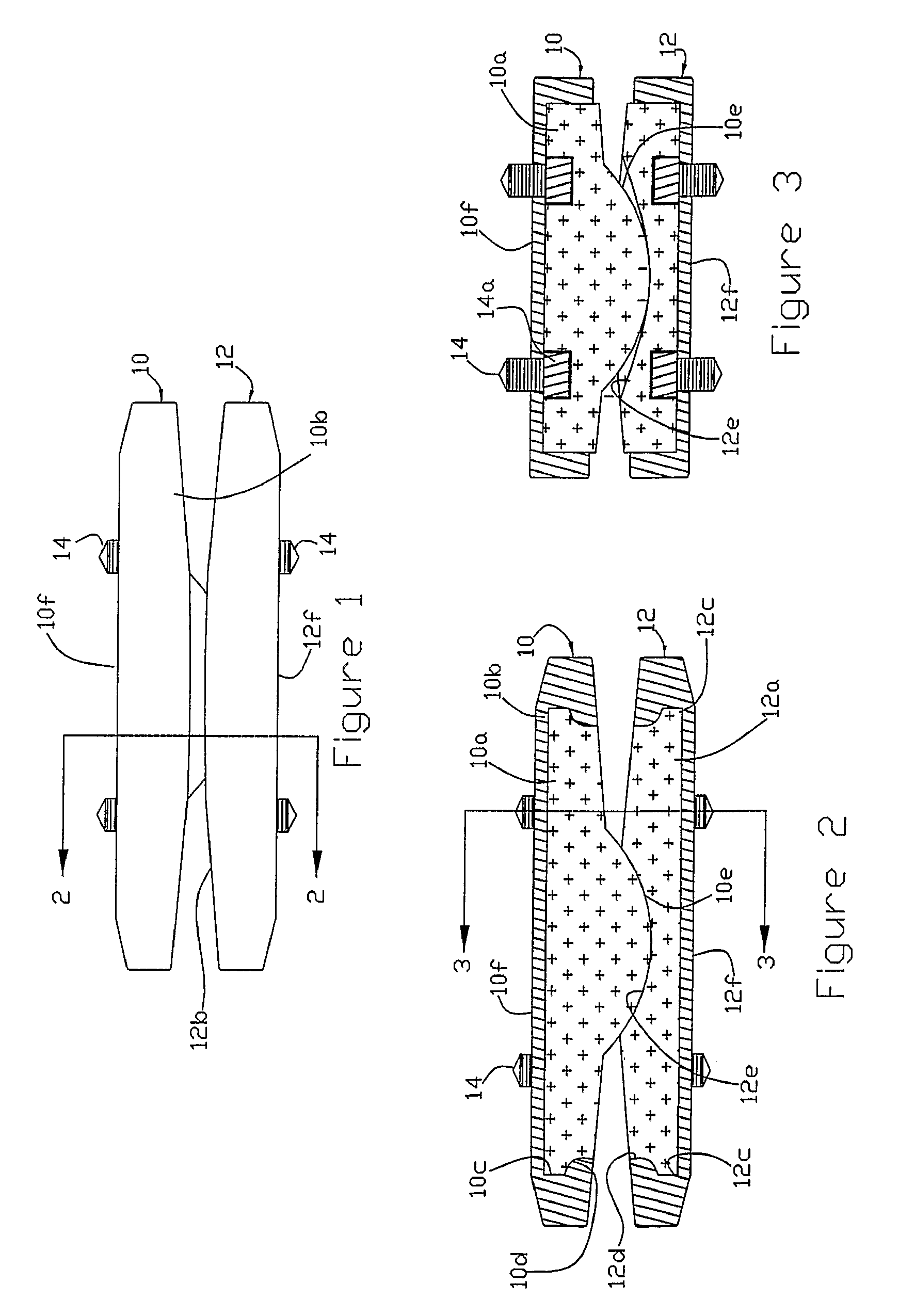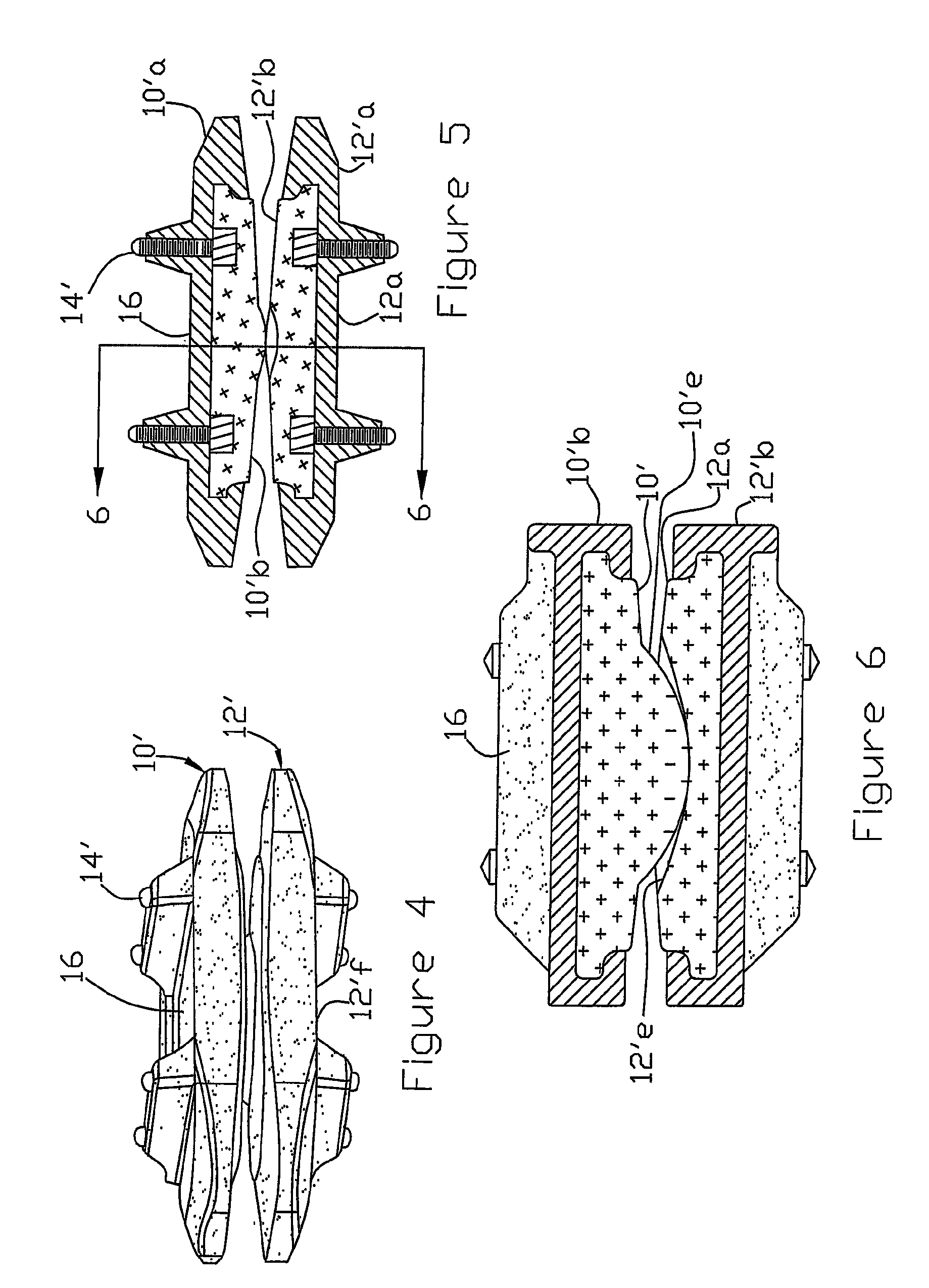Prosthesis for restoring motion in an appendage or spinal joint and an intervertebral spacer
a technology of appendage or spinal joint and prosthesis, which is applied in the direction of prosthesis, femoral head, other domestic objects, etc., can solve the problems of increasing the life expectancy of the artificial disc, stress shielding, and wear, and achieves less stiffness, reduce stress shielding, and enhance the life of the prosthesis
- Summary
- Abstract
- Description
- Claims
- Application Information
AI Technical Summary
Benefits of technology
Problems solved by technology
Method used
Image
Examples
Embodiment Construction
[0030]Referring now to FIGS. 1-3, a motion restoring intervertebral prosthesis, in accordance with this invention, comprises first and second components 10 and 12 with the components having inner sections 10a and 12a (formed of a primary material) and outer sections 10b and 12b (formed of a secondary material), respectively. The sections are integrally formed, preferably by an injection molding process, so that the secondary material partially encloses or encapsulates the primary material (except for the articulating surfaces) as will be explained with respect to FIG. 17. Briefly, outwardly extending protrusions 10c and 12c of the primary material are overlapped by an inwardly extending shoulders 10d and 12d of the secondary material. The inner sections 10a and 12a define cooperating articulating surfaces 10e and 12e in the form of a ball and modified socket to provide controlled rotation in the frontal plane and controlled rotation with translation in the sagittal plane as is descr...
PUM
| Property | Measurement | Unit |
|---|---|---|
| thickness | aaaaa | aaaaa |
| thickness | aaaaa | aaaaa |
| thickness | aaaaa | aaaaa |
Abstract
Description
Claims
Application Information
 Login to View More
Login to View More - R&D
- Intellectual Property
- Life Sciences
- Materials
- Tech Scout
- Unparalleled Data Quality
- Higher Quality Content
- 60% Fewer Hallucinations
Browse by: Latest US Patents, China's latest patents, Technical Efficacy Thesaurus, Application Domain, Technology Topic, Popular Technical Reports.
© 2025 PatSnap. All rights reserved.Legal|Privacy policy|Modern Slavery Act Transparency Statement|Sitemap|About US| Contact US: help@patsnap.com



